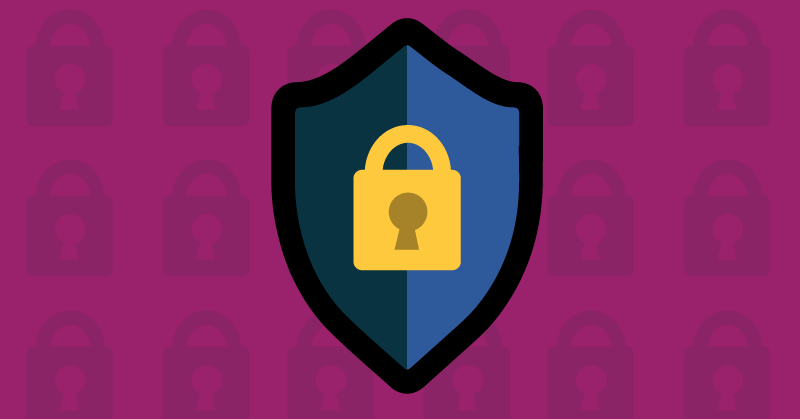Why partnering with an agency protects brand safety

Have you ever stumbled upon a website filled with clickbait ads while browsing online? You know the type – with headlines like 5 Shocking Benefits of Eating Pizza or This One Weird Trick Burns Calories While You Sleep, these ads look like they’d crash your computer if you accidentally clicked on one. Now imagine if your ads appeared next to this type of content. It wouldn’t look very good, would it?
Business owners or marketers who aren’t familiar with digital advertising may worry about their ads appearing on inappropriate or sketchy websites, videos, or apps. This is a valid concern – a survey found more than 80% of consumers would reduce or stop buying a regularly purchased product if advertised near extreme or dangerous content. This can impact brands of all sizes, which is why understanding brand safety is so important.
Brand safety keeps your brand associated with high-quality, relevant content. The above scenario is just one example of poor brand safety. If your ad is placed next to the wrong thing or on the wrong site, this can quickly erode consumer trust, credibility and impact sales.
How agencies protect your brand.
Poor brand safety can often be traced back to inexperienced marketing. Agencies have the resources and experience to keep your ads in appropriate environments and avoid association with misleading or inappropriate content. Below are just a few of the ways digital agencies can help safeguard your brand.
Agency partners protect your brand through partnering with verified publishers.
Reputable publishers also prioritize transparency, providing greater control over ad placement. This often includes the ability to use content exclusion and inclusion lists. Exclusion lists function exactly as they sound – they enable advertisers to opt out of displaying ads alongside content that is irrelevant or inappropriate for their brand. On the other hand, inclusion lists are just the opposite. Inclusion lists greenlight sites, apps, topics, and keywords that are safe and relevant to your brand.

Agencies have the know-how and tools to protect your brand from fraud.
Fraud in digital advertising is real and pervasive. It ranges from automated click fraud, which is repeatedly clicking on ads, to click farms, which manually generate dishonest revenue for site owners, to spoofing (faking) impressions on ads that don’t pay per click. That’s just the tip of the iceberg. The point is that it is everywhere and it’s an arms race. With every step taken to protect brands, criminals are working to overcome it. Every time the criminals find a way around, the good guys are working to shut it down. Programmatic advertising works in an increasingly complex ecosystem, and if you’re not sure how to place ads, you may be an easy target for fraud. This impacts brand safety, distorts campaign analytics, and wastes your advertising dollars.
While no one can insulate you 100% from fraud, an agency that knows the ecosystem well and has the right tools for detection and mitigation is key to successfully navigating these dangerous waters. From analyzing performance data and identifying suspicious activity to geographic and demographic targeting, agencies can limit brand exposure and mitigate much fraud risk.
Agencies understand the importance of brand awareness in addition to sales and lead generation.
People do business with brands they know, like, and trust. Have you ever hesitated to make a purchase or not purchased at all because something didn’t “feel” right? We all have. Now imagine your brand and someone not choosing you because they don’t know you. Not good.
While the ultimate goal of advertising is mostly seen as a way to generate revenue, a solid branding foundation through branding and awareness efforts makes reaching those SMART goals a whole lot easier.
For most organizations, brand awareness doesn’t magically appear out of thin air. It comes by consistently having your brand in front of the right audience and at the top of their mind when they are in-market for what you do or sell. It’s the all-important “know” part of know, like, and trust. If consumers don’t know you, they cannot like you, or trust you.
In addition, the whole “knowing you” part, (brand awareness) plays a role in brand safety. When consumers know a brand, they are more likely to recognize it and associate it with positive attributes. Suppose two brand’s advertisements end up on a questionable page. Visitors are more likely to give the benefit of the doubt to a brand they know, rather than a brand they don’t.
Agencies know the value of branding. They also have the expertise to do it efficiently and cost-effectively. Every single brand needs something different in this area. A good agency knows how to determine what that is for your brand.
Brand safety is not just a nice thing to have; it is a necessity in today’s digital advertising landscape. One misstep can put your brand at risk of a digital pitfall. By partnering with an agency that uses verified platforms and publishers, keeps an eye on click fraud, and builds awareness, you are protecting your ad dollars – and your brand.


